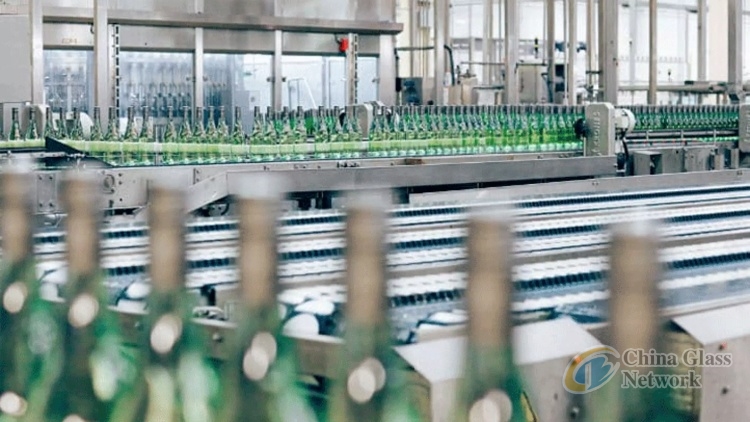Post Time:Apr 07,2025Classify:Industry NewsView:982
No one said it was going to be easy, but the road to net-zero can feel like one of those puzzles where you must move the pieces in exactly the right steps to solve the problem. In the world of UK glass manufacturing, this means creating the conditions today that will enable the industry to decarbonise whilst remaining competitive and viable in the future.
Just like a frustrating yet fascinating puzzle, I believe it’s a challenge worth sticking with. A decarbonised and healthy glass sector not only means a huge opportunity in terms of significant CO2 savings, it also means securing the manufacturing capability of one of Britain’s vital foundation industries.

The UK glass sector contributes over £2.5bn to the UK economy each year and provides more than 120,000 jobs across the supply chain. Its significance is only set to increase, as it will play a vital role in the government’s ‘Plan for Change’ agenda, which promises 150 major economic infrastructure projects and the biggest housebuilding commitment for 50 years.
Houses need glass for windows and insulation, renewable infrastructure such as wind turbines needs glass fibre, and, of course, all solar solutions need glass. Much of 21st-century life depends on products that use glass—from energy-efficient glazing to optical technologies that enable everything from barcode scanning to internet communications.
Then there’s the intrinsic ‘closed loop’ nature of glass. It’s one of the few truly circular materials, with most glass products using very high levels of post-consumer recycled glass content. Long before “sustainability” became today’s buzzword, glass has been quietly getting on with the job of enabling reuse and recycling.
Changing manufacturing infrastructure
So, where is the problem? The key issue is the crucial mismatch between the speed at which the industry needs to decarbonise, and the economics involved. There is a glaring gap between the wholesale price of gas, which is currently the major energy source for UK glass furnaces, and that of electricity, the primary energy source required for industrial-scale decarbonisation.
The UK currently has the highest industrial electricity prices compared to the rest of Europe, due to its higher dependency on natural gas for electricity generation and volatile natural gas prices. The ambition to decarbonise is impressive, but unless it is matched with long-term policy certainty from The Government – and competitive energy costs – the reality is that UK glass manufacturing will struggle to remain competitive.
Another part of the glass decarbonisation puzzle is connectivity to the electricity network. Some deft planning is needed to ensure that manufacturers can be confident that when their new hybrid or fully electric furnaces come on stream (fuel switching is only possible when old furnaces reach end of life), they will be able to be connected to the energy supply.
We hear stories of manufacturers being told there might be a five-to-ten-year wait for a grid connection. That’s clearly not a scenario that builds confidence. A strong lead from government on energy infrastructure planning and competitive electricity prices would provide much needed clarity and certainty for these significant decarbonisation investment projects.
Yet despite these challenges, I see good reason to remain optimistic. Around 60% of the UK’s 32 existing glass furnaces are due to be replaced over the next decade. If they all switched to low-carbon energy, this would reduce site CO2 emissions by 42% and bring an estimated £1.3 billion of investment to the UK (assuming £60 million per rebuild). As explained in our recently-updated British Glass Net Zero Strategy, the technical route to achieve net-zero is available with supportive policies.
Learning from our neighbours
There are already plenty of examples of work underway in the UK and Europe where decarbonised glass furnaces are either a reality or are soon to open. For example, an all-electric glass furnace is being built by Stoelzle Flaconnage in Knottingley and is due to start operating in 2026/27, and a hydrogen powered furnace that is set to produce the world’s first net-zero glass bottles at scale has been announced by Encirc at their Elton site in Chesire and is due to open in 2027. In Obernkirchen, Germany, Ardagh Glass’s NextGen hybrid furnace is said to have achieved a consistent 64% CO2 emissions reduction, saving approximately 18,000 tonnes of CO2 since the start of 2024.
It’s understandable during these times of immense change that there will be delays and setbacks. What we’re asking is that, given the timescales and the unique benefits provided by a vibrant UK glass manufacturing sector, an urgency is given to resolving these issues now.
Our ask, in a nutshell, is competitive electricity costs and help to match connections to align with rebuild schedules.
Decarbonised glass can be at the centre of a circular, low-carbon economy in the UK with supportive policy interventions such as those already in place in mainland Europe. This will mean that the glass industry can get on with supporting the UK’s ambitious growth plans and vital net-zero goals.
It might be one hell of a puzzle to solve, but once we do, not only will we get the satisfaction of cracking the problem, the planet and generations to come will thank us too.
Source: www.edie.net/Author: shangyi